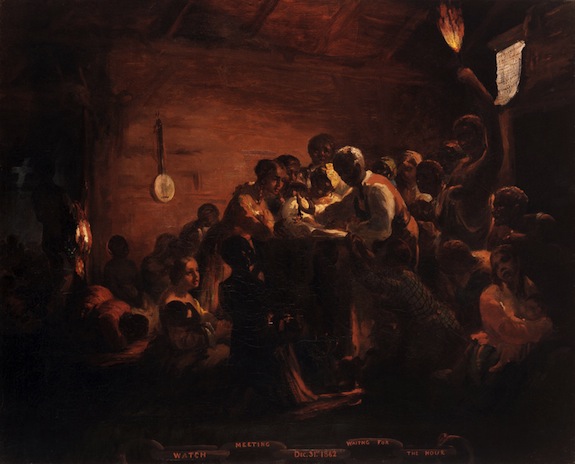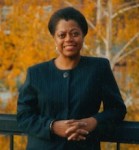What Will You Be Watching for on Watch Night?
With end-of-year watch and see anxieties lurking, it’s important to know that the Watch NIght was a wait for news of freedom
![]()

“Waiting for the Hour” by William Tolman Carlton. Courtesy of the White House Historical Association

Guest blogger, Joann Stevens is the program manager of Jazz Appreciation Month at the American History Museum. Courtesy of the author
Watch Night Service 2012 might make history as well as commemorate it. Guess we’ll have to watch and see.
The roots of Watch Night Service celebrated in many African American communities nationwide are founded in American slave and liberation history. Lore has it that on midnight, December 31, 1862, the New Year was ushered in by slaves watching and praying for news that President Abraham Lincoln’s Emancipation Proclamation had become law. At the time more than three million African Americans in the U.S. were in bondage, primarily in the south.
The document penned by President Lincoln in 1862 during a critical juncture in the Civil War declared that on Jan. 1 all slaves in confederate states would be legally free and that “such persons of suitable condition will be received into the armed service of the United States to garrison forts, positions, stations and other places, and to man vessels of all sorts in said service.”
After the proclamation became law, nearly 200,000 former slaves (joined by 10,000 freedmen) entered the Union Army along with 19,000 who joined the Navy to fight for their freedom.
In the painting above, slaves and an apparent lone white woman congregate on Watch Night to await a dramatic shift in American history as the Emancipation Proclamation, freeing slaves in confederate states, is about to take effect. The watch held by the old man in white shirt and red vest is set at five minutes before midnight…or freedom. The 1863 painting by William Tolman Carlton is sometimes known by the abbreviated title, “Waiting for the Hour.”
The 150th Anniversary of the Emancipation Proclamation is being commemorated at the Smithsonian with the exhibition Changing America, among other events. And serving as preamble is a show at the American Art Museum where a host of works tell the story of how Americans, and particularly American artists, perceived the anxieties of a nation divided and at war. The National Archives will celebrate with Watch Night and New Year’s Day events that include their exhibition of an original copy of the proclamation, music and a dramatic reading of the proclamation by scholar andactivist artist Bernice Reagon.
End of year worries, whether mythical or fiscal has everyone on edge. Should we stay up late on December 20, watching to see if we make it past December 21? That’s the date that the Mayan Calendar allegedly signals the end of the world. (The Smithsonian National Museum of American Indian has created the Mayan calendar project to alleviate your fears.)
Once over the Mayan Calendar hurdle, we have to watch that we don’t “Fall Off the Cliff” as the government scrambles to determine and pass fiscal policies to replace those on a countdown to expire Jan. 1.
Lots of watch nights to watch for.
Joann Stevens is program manager of Jazz Appreciation Month (JAM), an initiative to advance appreciation and recognition of jazz as America’s original music, a global cultural treasure. JAM is celebrated in every state in the U.S. and the District of Columbia and some 40 countries every April. Recent posts include Hawai`i’s Troubadour of Aloha and Remembering Dave Brubeck, Goodwill Ambassador